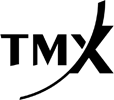| Home > Site Help |
Help
Last Trade Table:
- Last Traded - the most recent trade in a particular security.
- Up or Down "tick" Arrow - displays the current price trend based on the latest intra-day price movement. It does not reflect today's price movement in reference to the previous trading day.
- Last Bid Size - the aggregate size in board lots of the most recent offer(s) to buy a particular security.
- Last Bid Price - the highest board lot price of all orders to buy a stock.
- Last Ask Price - the lowest board lot price of all orders to sell a stock.
- Last Ask Size - the aggregate size in board lots of the most recent offer(s) to sell a particular security.
- Net Change - the difference between the current value and previous close value.
- Volume - the traded volume for the security.
- Open - the price of the first board lot trade executed at the opening of a trading session.
- High - the highest price at which a board lot trade on a security was executed during a trading session.
- Low - the lowest price at which a board lot trade was executed during a period of time.
End of Day Data:
- Rolling 52 Week High - the intra-day high price for the past 52 weeks.
- Rolling 52 Week Low - the intra-day low price for the past 52 weeks.
- Quoted Market Value (QMV) - The applicable Toronto Stock Exchange listed securities of the issuer that are issued and outstanding multiplied by the closing price of such securities on the Toronto Stock Exchange as at the most recent market close.
- Total Number of Shares - the total number of issued and outstanding shares for the security.
- Shares in Escrow - the number of issued shares that are currently subject to escrow restrictions. Escrow shares are issued non-tradable stock held separately from free-trading shares until certain conditions are met.
- # of Shares Outstanding / Net Shares Outstanding - the total number of shares that are issued and outstanding for a security (excluding Escrow Shares for TSX Venture Exchange listed companies). This number is current as of the last update provided by the issuer and/or their transfer agent.
- Float Quoted Market Value (TSX Venture Exchange) - A TSX Venture listed company's Float Quoted Market Value (also referenced on this web site as Market Capitalization) for a security is calculated by multiplying the last board lot price as at the most recent market close by the number of shares outstanding, net of any escrowed shares.
- Price-Earnings (P/E) Ratio - A common stock's last closing market price per share divided by the latest reported 12-month earnings per share. This ratio shows you how many times the actual or anticipated annual earnings a stock is trading at. If the calculated ratio is a negative number, or if the calculation of the P/E Ratio is affected by a currency other than Canadian dollars, the P/E Ratio field will display "N/A".
- Earning/Share (trailing 12 months) - the corporate earnings within the past 12 months attributable to each share.
- Dividend Yield - the dividend yield on either common or preferred stock is the indicated annual dividend expressed as a percentage of the current market price of the stock. If this calculation is affected by one or more amounts being quoted in a currency other than Canadian dollars, the Dividend Yield field will display "N/A".
- Indicated Dividend Rate - The indicated dividend rate for established companies that have been paying dividends on a regular basis for a set period of time is based on the projection of dividends to come based on past practices of the company. For example, if a company pays $.50 per quarter, their indicated dividend rate is $2.00. Extra, special or unusual dividends are sometimes included.
For companies that pay dividends occasionally with no set frequency, the rate is based on historical data after one full year of declared distributions. Extra, special or unusual dividends are sometimes included.
For unit trusts, the rate is based on the projection of distributions to be paid in the upcoming 12 months based on distribution policy and past practices of the unit trust. For unit trusts that declare distributions with a set annual frequency, the rate is calculated by multiplying the current regular distribution by the number of times it is expected to be paid in the next 12 months, based on the frequency. For example, if a unit trust pays $.50 per quarter, the indicated distribution rate is $2.00 (4 times $0.50). Extra, special and unusual distributions are excluded, unless a current pattern of periodic payment is established (i.e. paid more than once during the past 12 months or paid in the same month of the current year and prior year). For unit trusts that don't declare distributions with a set annual frequency, the rate is the total of all distributions paid in the past 12 months. - Dividend Timing Indicator - This area indicates the timing of dividend payments by the company. Different types of timing may be indicated: yearly (Y), annually (A), semi-annually (S), quarterly (Q), monthly (M), and no set frequency.

